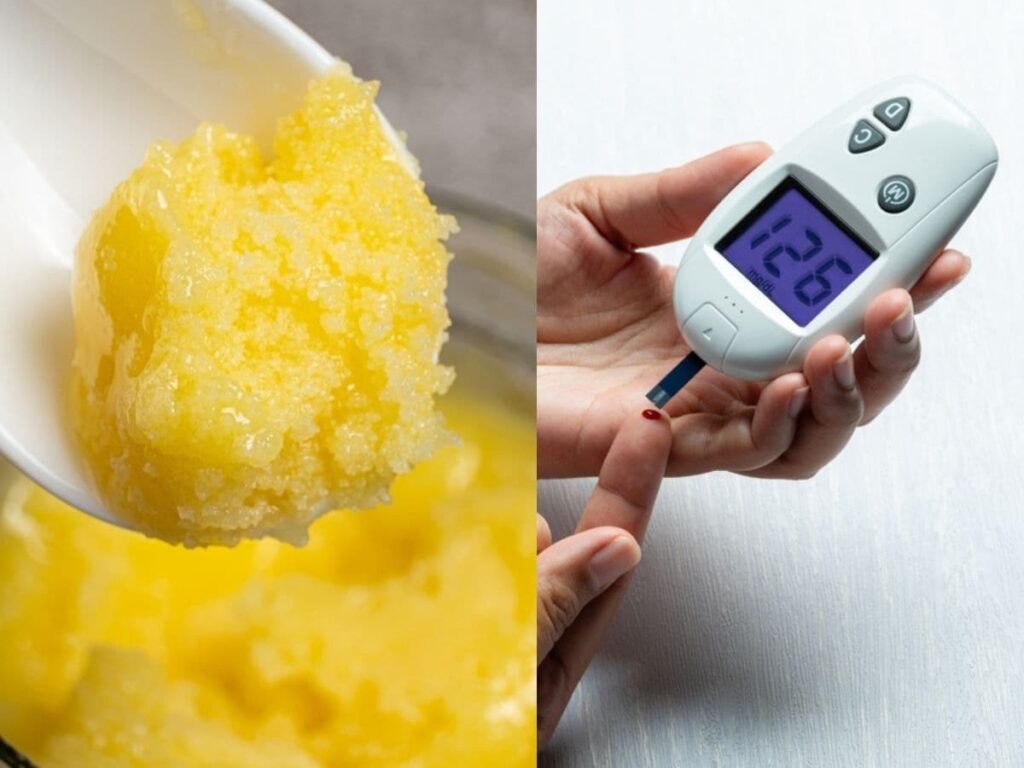Ghee, a type of clarified butter, is widely appreciated for its rich flavor and health benefits. With the rise in diabetes cases globally, many are left wondering if incorporating ghee into their diets is beneficial or harmful. In this article, we will explore the implications of ghee consumption for diabetics, including its nutritional properties, potential benefits, and guidelines for safe consumption.
Understanding Ghee: Nutritional Profile
Ghee is made by simmering butter to separate the milk solids and water, resulting in a product that is lactose-free and rich in healthy fats. Here’s a quick look at its nutritional composition:
| Nutrient | Per 100g of Ghee |
|---|---|
| Calories | 900 kcal |
| Total Fat | 100g |
| Saturated Fat | 62g |
| Monounsaturated Fat | 29g |
| Polyunsaturated Fat | 4g |
| Vitamin A | 300% DV |
| Vitamin E | 2% DV |
Benefits of Ghee for Diabetics
1. Healthy Fats and Glycemic Control
One of the major components of ghee is healthy fats, particularly monounsaturated and saturated fats. These fats can help in stabilizing blood sugar levels, preventing rapid spikes that are often problematic for diabetics.
2. Anti-Inflammatory Properties
Ghee contains butyrate, a short-chain fatty acid that has been shown to reduce inflammation. Since chronic inflammation is often linked to insulin resistance, incorporating anti-inflammatory foods like ghee can be beneficial for managing diabetes effectively.
3. Lactose-Free and Nutrient-Dense
Being lactose-free, ghee is suitable for those who cannot tolerate dairy products, making it an excellent source of energy and essential nutrients without provoking any adverse reactions.
How to Incorporate Ghee into a Diabetic Diet
While ghee offers numerous health advantages, moderation is crucial for diabetics. Here are some tips for incorporating ghee into your meals:
- Use as a Cooking Medium: Replace other oils with ghee for sautéing vegetables or making curries.
- Pair with Whole Grains: Use ghee in moderation on whole grain bread or brown rice for added flavor.
- Dressing for Salads: Mix ghee with lemon juice and herbs for a nutritious salad dressing.
Precautions and Recommendations
It’s essential for diabetics to keep in mind the following when consuming ghee:
- Limit portions: Stick to a small quantity (1-2 teaspoons) to balance fat intake.
- Monitor Blood Sugar Levels: Pay attention to how your body responds to ghee after consumption.
- Consult a Dietitian: A healthcare provider can help tailor dietary recommendations based on individual health needs.
Conclusion
Ghee, when consumed in moderation, can be a tasty addition to a diabetic-friendly diet, offering various health benefits including healthy fats, anti-inflammatory properties, and nutrient density. However, it’s crucial to remain vigilant about portion sizes and overall dietary balance. Incorporating ghee mindfully can enhance flavor while supporting health goals related to diabetes management. Always consult with healthcare professionals for personalized dietary advice.
